Managing your email can often feel like walking through a dark, crowded room. You know there's something important in there, but you can hardly find your way around to locate it. Studies show that the average office worker receives around 121 emails daily and spends about 28% of their workweek responding to and organizing them. Unsurprisingly, many people find email overload stressful and prefer to focus on more engaging tasks. Email management tools, including the best AI email assistant, can help you streamline your inbox, automate responses, and minimize the chaos of your email. This article will offer valuable insights on the best email management tools for an optimized inbox.
Antispace's AI-based productivity operating system can enrich this resource. By employing an artificial intelligence email assistant, like Antispace, you can automate and optimize email tasks to lighten your load and improve productivity.
17 Best Email Management Tools for an Optimized Inbox
1. Antispace
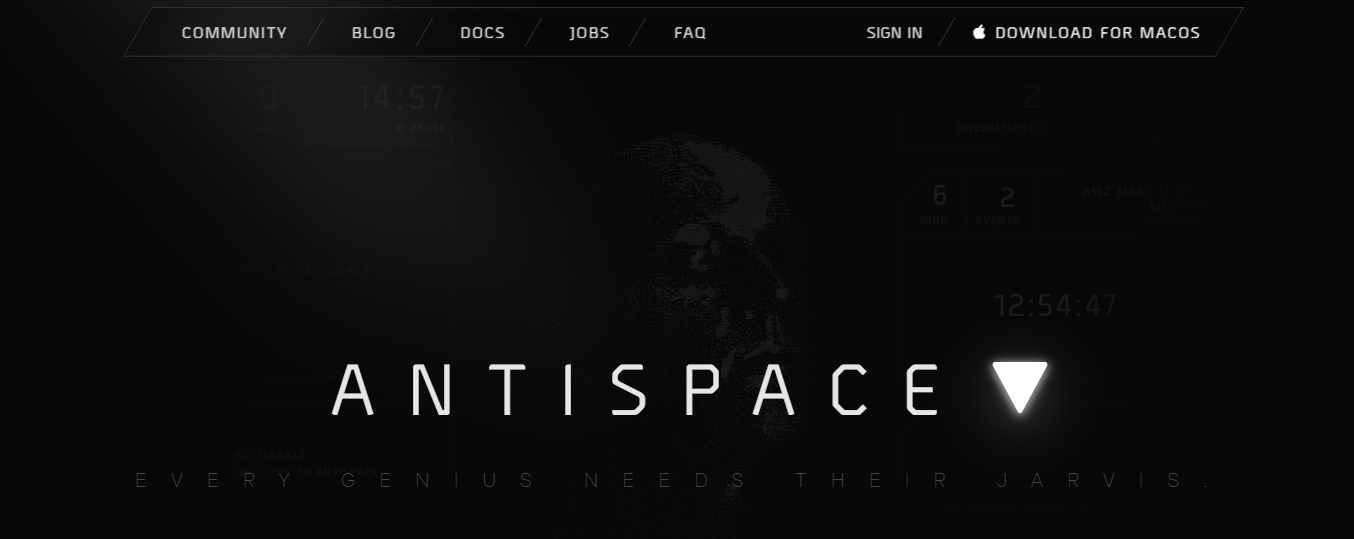
Antispace transforms your daily workflow with an AI-powered, gamified productivity operating system. Our platform seamlessly integrates with your essential tools, email, Calendar, and Notes, while our AI assistant handles everything from email management to task organization.
We've built intelligence into every aspect of your workflow:
- Intelligent email responses
- Automated calendar management
- Enhanced note-taking
- Streamlined task coordination
Antispace is your virtual executive assistant, reducing context switching and automating routine tasks. It lets you focus on what matters while our AI handles the rest. Whether you're brainstorming ideas, managing communications, or coordinating projects, Antispace turns productivity from a chore into an engaging experience.
Get started for free with one click today.
2. SendBox

SendBox allows users to craft and refine transactional email templates based on distinct services, so every communication piece is targeted and resonant. Users can monitor their email campaigns with the online email queue.
Open nature might raise security concerns, and without a dedicated support team, updates might not be as frequent or robust as commercial solutions. Plus, user support might be community-driven rather than officially structured.
Sandbox Best Features
Pre-made templates help you save time and effort while ensuring a professional look. Transactional email software is designed to increase the deliverability rates of your emails.
Sandbox limitations
Open source raises security concerns and lacks dedicated support. Unlike other email management software, it also has minimal inbox management features.
Sandbox Pricing
- Free
3. Helpwise

Meet Helpwise, your collaborative haven for email management. It’s mainly a boon for support, sales, and customer service teams requiring seamless collaboration on shared emails.
With features designed for simultaneous multi-user access, you’ll always be in sync with team members. Dive into streamlined conversations and watch as your team’s efficiency soars.
Helpwise Best Features
Schedule emails flexibly, sending them whenever you wish. Helpwise is constantly improving due to continuous software advancements.
Seamlessly manage live chat alongside other channel queries in a collaborative hub. Auto-assign conversations to your team using smart assign and automation rules.
Helpwise Limitations
It was designed as customer service software, so it’s not ideal for other use cases. Onboarding individuals unfamiliar with its format can be challenging. Users have reported that the platform’s search function requires enhancements.
Helpwise Pricing
- Standard: $15/user billed monthly
- Premium: $25/user billed monthly
- Advanced: $50/user billed monthly
- Enterprise: Contact for pricing
4. Front

Welcome to Front, where emails meet collaboration on a shared stage. Front reimagines the traditional email setup, perfect for teams that desire transparency in email-driven tasks.
Customer support, sales, or operations teams will find a faithful ally in Front. With shared inboxes and real-time collaboration tools, say farewell to cluttered email chains and internal notes and embrace clear, coordinated communication.
Front Best Features
Centralize all inbound messages, from emails to voice notes, in one place—Automate message assignments based on content or external data. Ensure clear responsibility with auto-assignments based on user criteria.
Use tags for better message categorization, reporting, and search efficiency. Integrate Front with several other apps for improved project management, communication, customer success management, and more.
Front Limitations
Users say the calendar functionality needs significant improvement. Initially, getting familiar with all of Front’s features can be overwhelming.
Front Pricing
- Growth: $59/seat billed monthly
- Scale: $99/seat billed monthly
- Premier: $229/seat billed monthly
5. Brevo
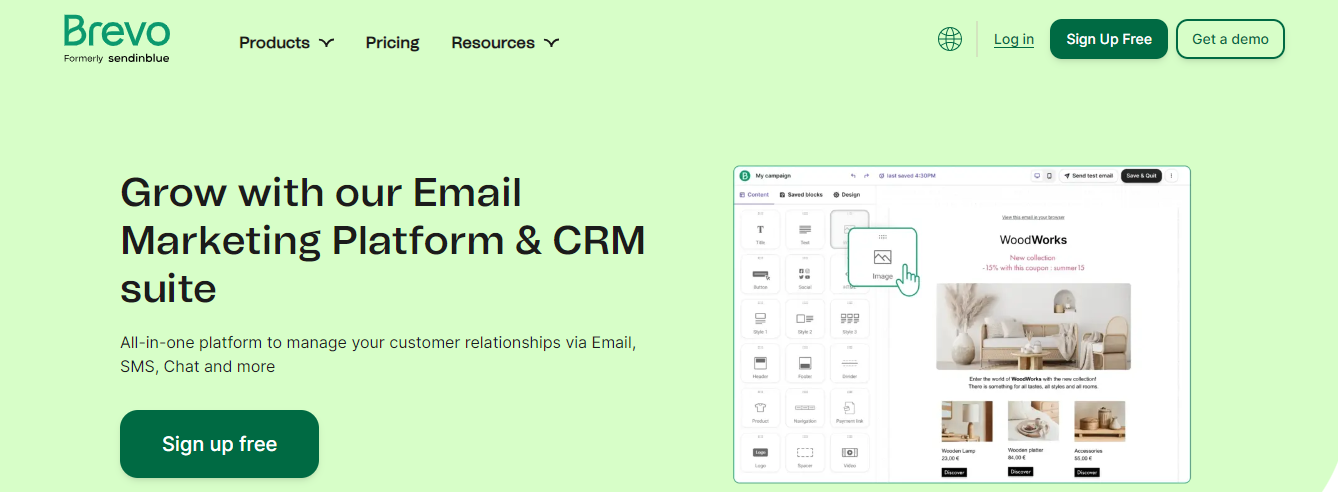
Brevo might be the new kid on the block, but it packs a punch for streamlined email management. Designed for professionals who crave a minimalistic yet efficient approach to emails, Brevo brings clarity to your inbox.
Solo entrepreneurs, freelancers, customer service agents, and small business owners will particularly benefit from turning email from a chore into a delightful, manageable task.
Brevo Best Features
User-friendly interface combined with an intuitive drag-and-drop editor. Diverse and customizable templates cater to various needs. Deep insights through robust reporting and analytics. Marketing automation and segmentation for targeted outreach.
Brevo Limitations
Limited integrations compared to other email management apps. Some users found the initial setup challenging.
Brevo Pricing
- Free
- Starter: $25/month per user
- Business: $65/month per user
- Enterprise: Contact for pricing
6. Superhuman
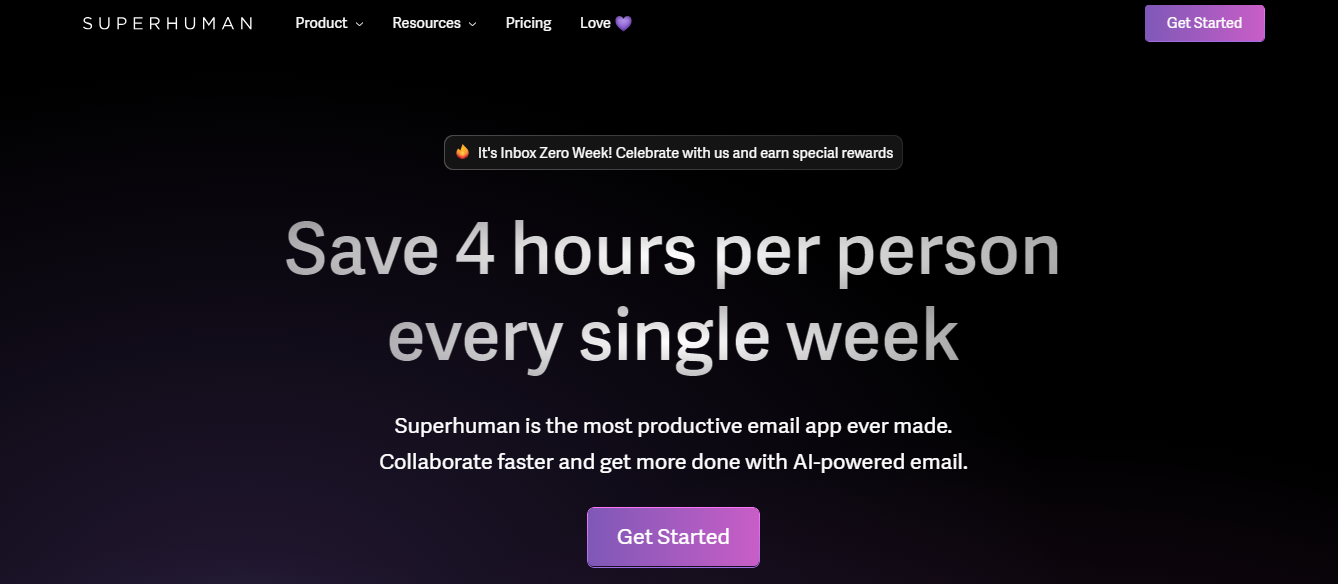
Superhuman is a dream come true for those obsessed with speed and efficiency. It’s not just about managing emails; it’s about doing so at lightning speed.
Professionals who find themselves inundated with emails, especially executives and managers, will witness their productivity skyrocket with Superhuman. With keyboard shortcuts and AI-backed tools, you can cut through the noise and reach the essence of your communication.
Superhuman Best Features
Efficient email management with handy keyboard shortcuts. No need for multiple accounts; split inboxes let users concentrate on one email account at a time. Scheduled follow-ups ensure timely responses and follow-through.
Superhuman Limitations
The search functionality lacks versatility. Users must switch accounts to see different messages.
Superhuman Pricing
- Growth: $30-45 per user/month
- Starter: $30 per user/month
- Enterprise: Contact for pricing
7. Help Scout
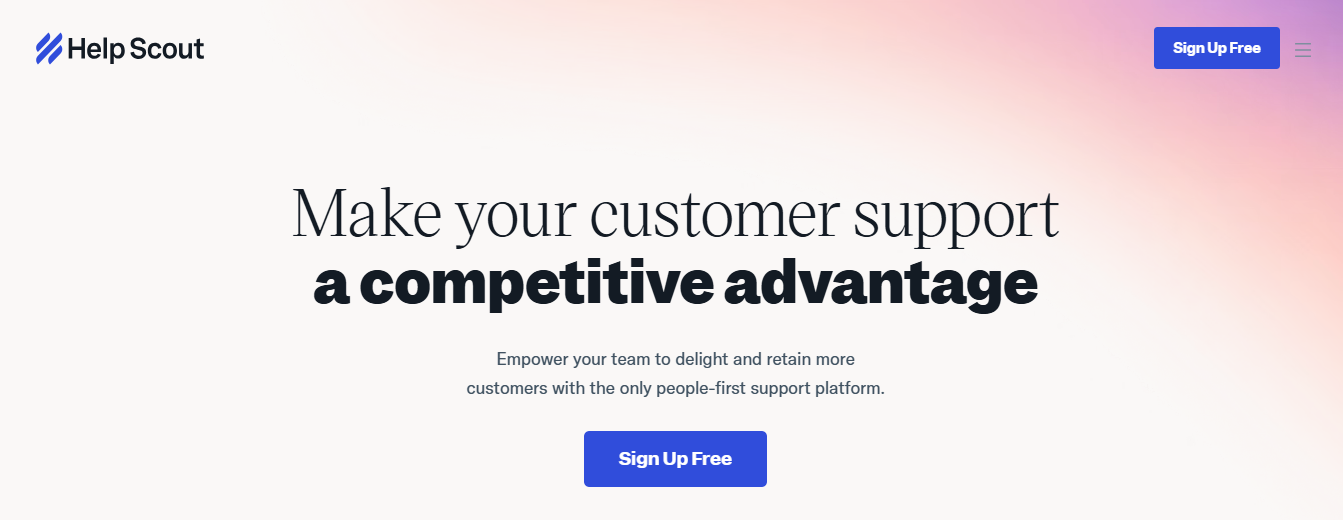
Help Scout isn’t just another email management tool; it’s tailored for those on the frontlines of customer support interactions. Offering shared inboxes seamlessly blending with help desk features, Help Scout ensures every customer query finds its rightful owner.
Discover collaborative email sorting, tagging, and replying features that ensure your customers always leave satisfied.
Help Scout Best Features
Comprehensive support system: email, live chat, and a knowledge base. Promotes team collaboration with a shared inbox. Automate repetitive tasks and integrate seamlessly with other tools. Gain a full view of user interactions to monitor customer satisfaction.
Help Scout Limitations
Each ticket can only be assigned to one team member. The mobile app offers only basic features, has limited language support, and can be clunky when formatting documents.
Help Scout Pricing
- Standard: $20/month per user
- Plus: $40/month per user
- Pro: $65/month per user
8. Klaviyo
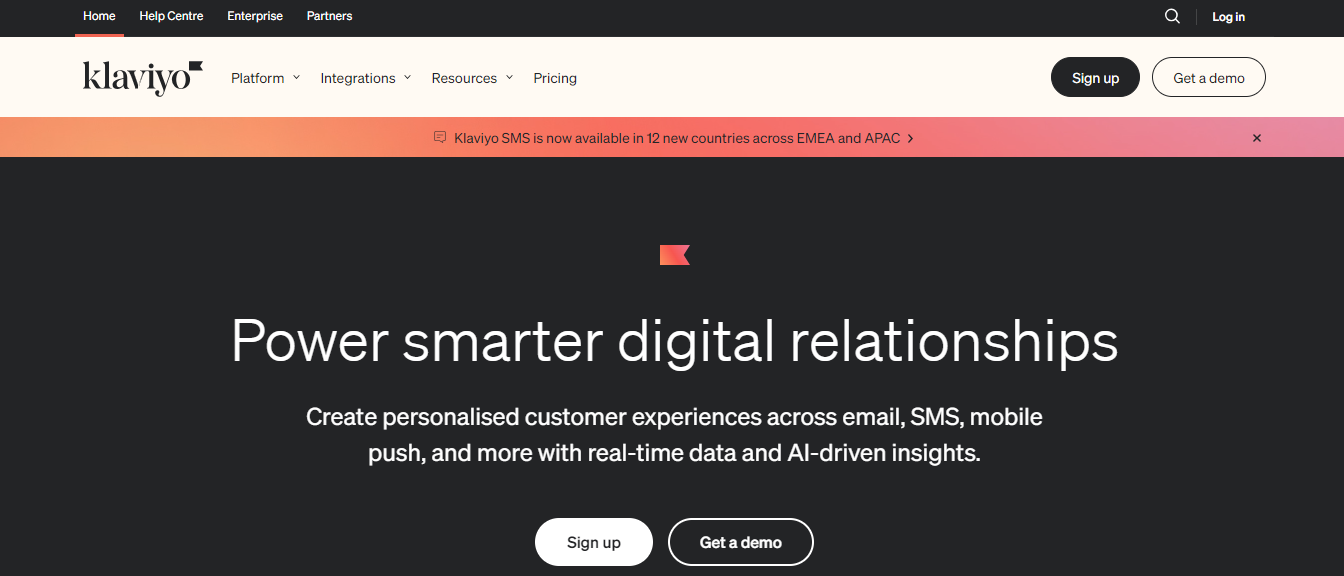
Klaviyo stands tall at the intersection of email management, email marketing software, and e-commerce. If you’re an online store owner or e-commerce marketer, Klaviyo is your passport to managing and leveraging emails for business growth.
With robust segmentation and automation features, you can transform generic email marketing communication into personalized campaigns that resonate with your audience.
Klaviyo Best Features
60+ pre-configured automations for drip campaigns and more. Choose from 80+ customizable templates. Hyper-target your audience with behavior-triggered communication channels.
Klaviyo Limitations
Users report that creating new campaigns from scratch can be tedious, and reaching and obtaining support can be challenging.
Klaviyo Pricing
- Free
- Email: $45/month
- Email & SMS: $60/month
9. MailerLite
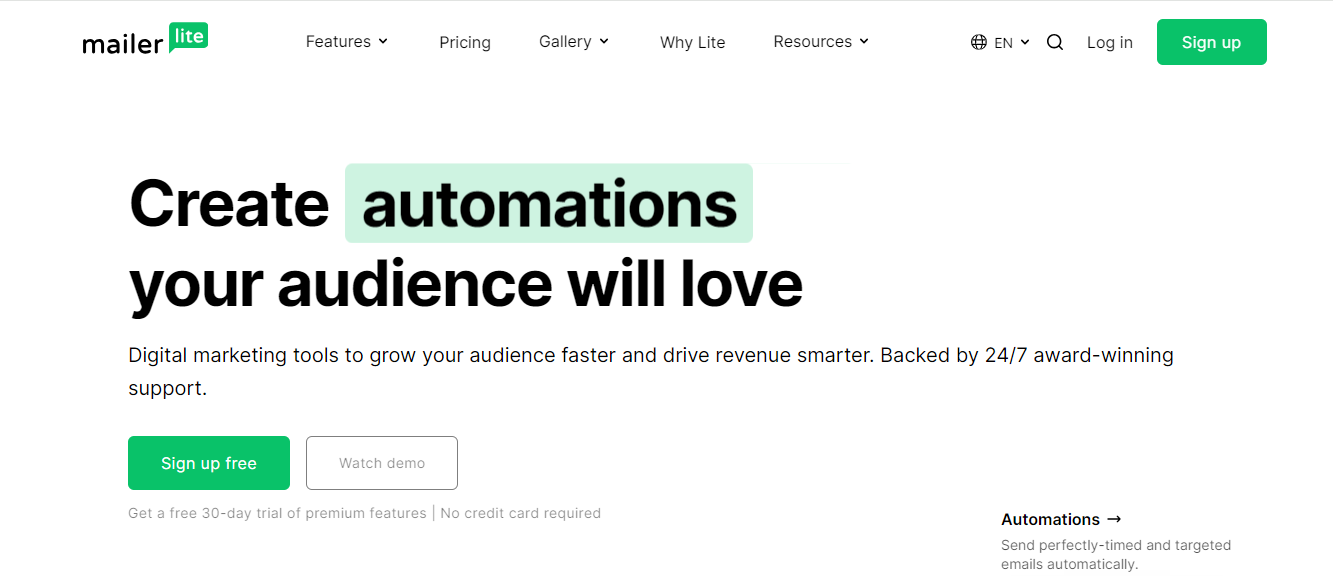
Simple, intuitive, and efficient—that’s MailerLite for you. This platform is a blessing for small businesses and startups looking for a cost-effective way to manage and market through emails. With user-friendly templates and insightful analytics, MailerLite ensures even those new to email marketing feel right at home.
MailerLite Best Features
Three editor choices for diverse, responsive campaign needs. Integrates with major e-commerce platforms for better customer targeting. Advanced marketing workflows are available in the automation builder.
MailerLite Limitations
Modifying campaign templates after selection has limitations. Some users find the automation and design edit tools challenging to navigate.
MailerLite pricing
- Free
- Growing Business: $10/month for up to 500 subscribers
- Advanced: $20/month for up to 500 subscribers
- Enterprise: Contact for pricing
10. SaneBox
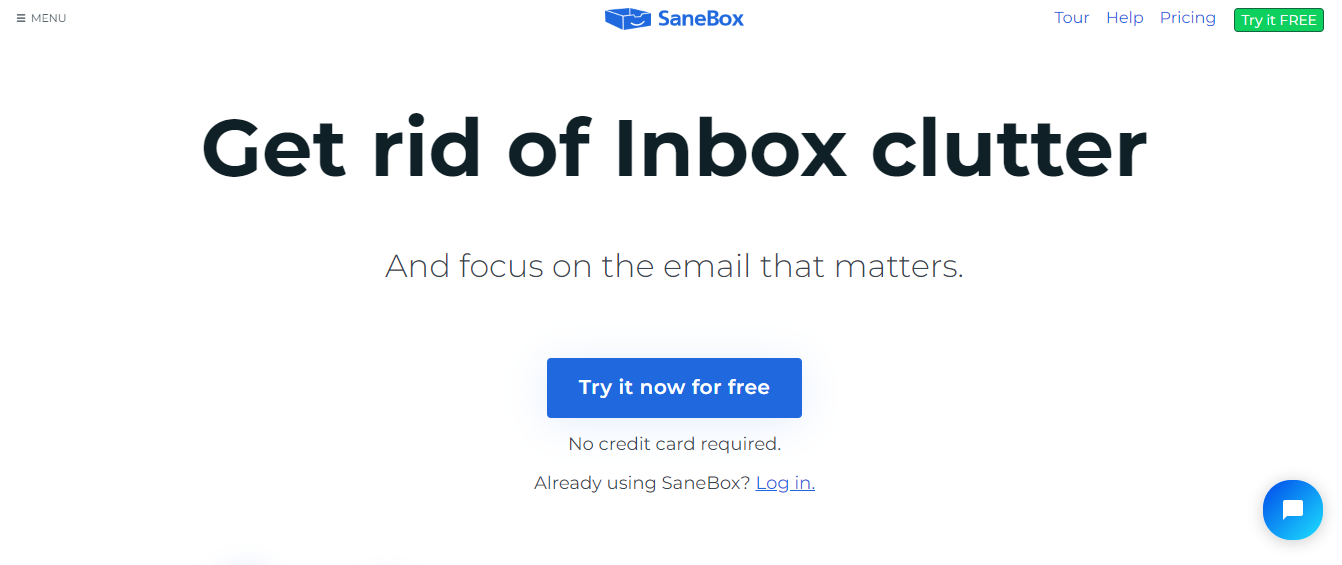
Leveraging advanced algorithms, SaneBox studies your email habits to automatically filter unimportant messages into separate folders, allowing you to focus on what truly matters. Beyond just sorting emails, it offers features like one-click unsubscribe, defer emails for later, and track responses to enhance your email productivity.
Compatible with nearly all email services, SaneBox operates securely, ensuring your data’s privacy. Whether you’re overwhelmed with promotional emails, notifications, or the sheer volume of daily correspondence, SaneBox promises a streamlined, more manageable inbox experience.
SaneBox Best Features
The automatic categorization feature ensures only important emails appear in your inbox, with less crucial emails directed to the SaneLater folder. The SaneCC feature emphasizes actionable emails by identifying and separating emails not in the “to” line, allowing you to focus on priority messages.
Users can schedule email-free breaks with the “Do Not Disturb” feature, which temporarily moves new emails to a designated folder.
SaneBox Limitations
The Digest feature can be confusing, and some users struggle to train it effectively. Due to its complex design, navigating the project dashboard can be cumbersome. The daily summary design lacks visual appeal, causing some users to overlook or disregard it.
SaneBox Pricing
- Snack: $7/monthly
- Lunch: $12/monthly
- Dinner: $36/monthly
11. Microsoft Outlook
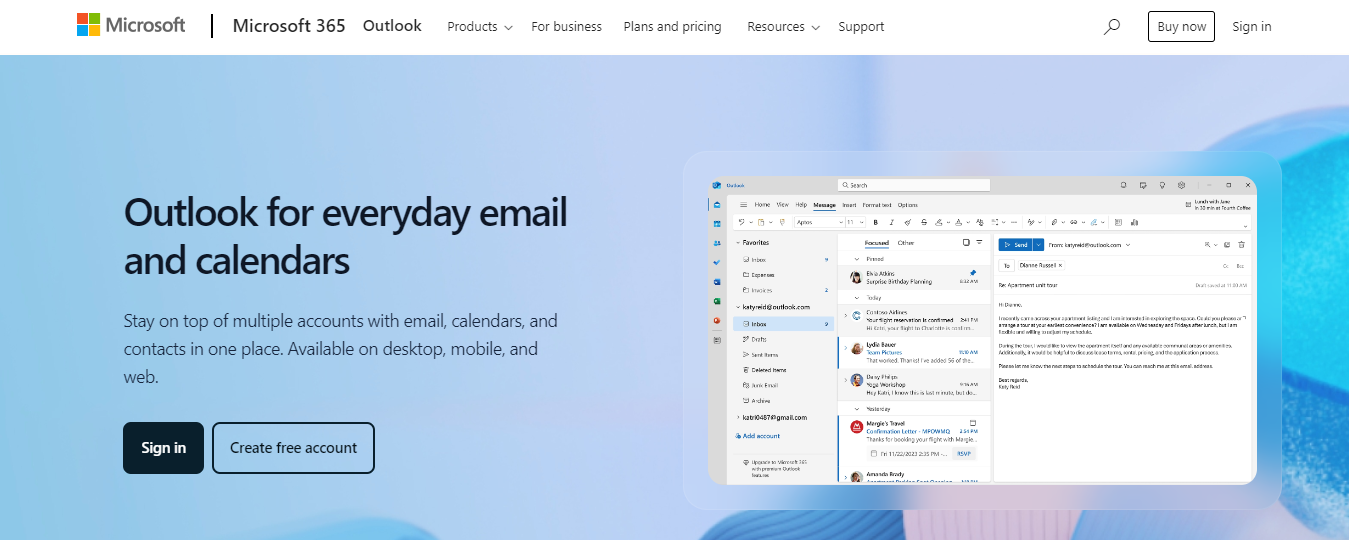
The ever-reliable Microsoft Outlook has been helping individuals and teams manage emails for decades. Today, Outlook isn’t just seen as an email management tool but a full-fledged productivity suite that lets you stay on top of schedules and projects. The best part is how easily accessible the platform is across desktop, web, and mobile devices.
Outlook seamlessly integrates with Microsoft apps such as Word and Excel, managing different aspects of your work without switching between apps. Custom folders and automation rules help streamline how emails are routed and categorized, while the snooze feature lets you temporarily remove emails and bring them back when ready. Moreover, powerful built-in spam filtering prevents unwanted messages from sight.
Key Features
- Organize emails by creating custom folders and subfolders based on different criteria
- Set up rules to automatically route your emails
- Sort emails by date, sender, subject, and other criteria
- Apply filters to view specific types of emails, such as unread or flagged messages.
Limitations
Microsoft Outlook has many features, which can make it overwhelming for some users. Outlook 365 is trying too hard. There are way too many dropdowns and auto-completes in Outlook 365! As I casually move my mouse, every little thing is a landmine to bring up a “short menu” or shortcut.
Or I’m trying to reply to an email, but NOW my mouse is hovering over this one thing that brings up a popup, and now instead of typing, I’m archiving a draft. You’re trying too hard, MS 365! Chill out! Get out of my gosh dang way!
Pricing
Microsoft Outlook’s basic plan starts from $6/user/month and can go up to $22/user/month.
12. Missive
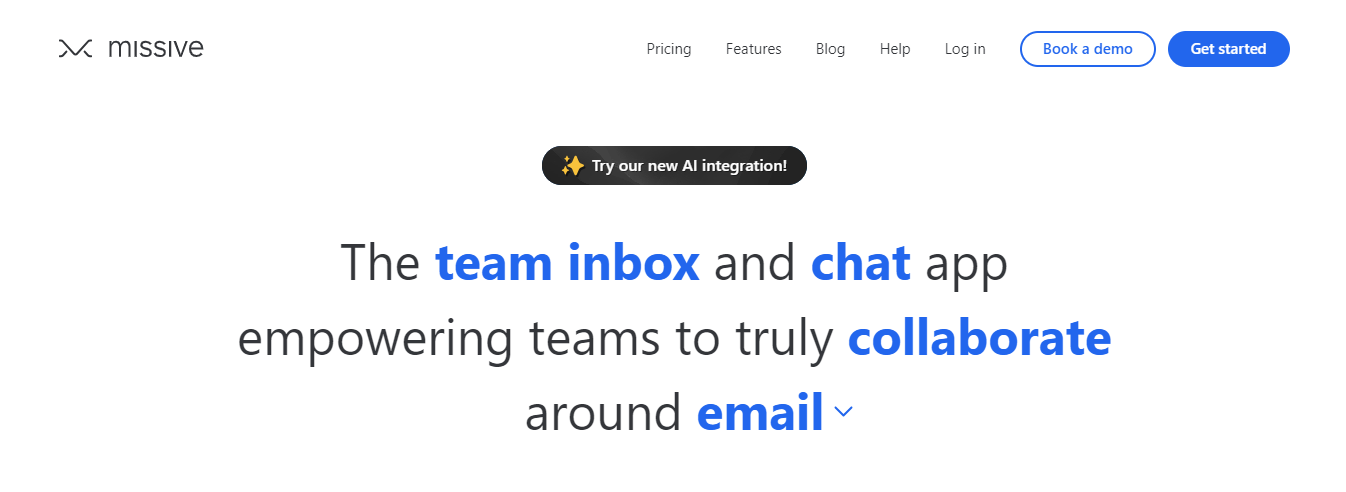
Missive is a collaborative inbox that lets teams group, assign, and collaborate on emails. The platform lets you set up dedicated shared inboxes for different teams:
- Support
- Sales
- Marketing, etc.
Users can create custom rules to automate repetitive work such as assigning emails, applying tags, or sending messages, based on specific conditions.
For managers and supervisors, it helps to know that Missive offers a comprehensive team-wide view of who is working on what email and its due dates. With all these features, Missive can double as a ticketing system.
Key Features
The “Rules” feature lets you automate tasks when specific conditions are met, and share pre-written responses and templates across teams. This comes in handy when responding to common questions. Combine related conversations into a single thread to reduce inbox clutter. Integrations with popular apps like:
- Aircall
- Asana
- HubSpot
- Salesforce
- Trello
Limitations
Takes time to learn and use the platform. Some features might be overkill for individuals or small teams.
Pricing
Starts at $14/user/month and can go up to $36/user/month
13. Clean Email

You can delete, archive, and categorize emails at scale with Clean Email. Its Smart Views feature automatically groups emails into categories like Social, Promotions, and Newsletters, making it easy to clear out the noise without touching essential messages.
You also have the option to set up automated workflows that route emails to specific folders. And if you’re looking for an efficient way to deal with promotional emails, the tool’s Unsubscriber feature can help. It brings all your subscriptions in one place, making it easier to take action.
Key features
- Automatically groups emails by categories such as Social, Promotions, or Newsletters.
- Identify subscriptions without an unsubscribe link and opt-out.
- Get one-click cleaning suggestions to archive or delete unnecessary emails instantly.
- Set up rules to automate repetitive actions, such as archiving promotional emails.
Limitations
The free plan has a limit of 1000 emails, which may not suffice if you and your team handle emails at scale. The most valuable features require a paid account. While this is acceptable, people would be more inclined to try the service if they could try the features you’re asking them to pay for.
Pricing
Starts at $9.99/user/month and can go up to $ 99.99/user/month.
14. Mailbird
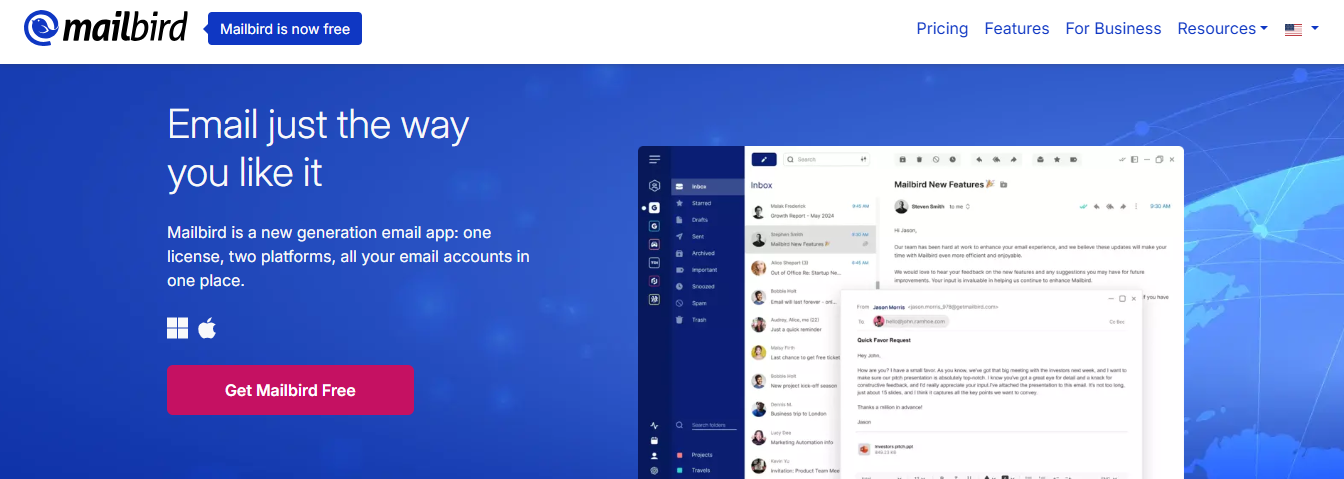
Mailbird helps you manage multiple personal and business email accounts in one unified inbox. Its clean interface lets you use the Mac and PC versions with the same license. What makes Mailbird stand out is its customization. You can personalize the interface, change themes, adjust colors, and even set custom notification sounds to match your style.
It also offers built-in integrations with apps like WhatsApp, Google Calendar, Dropbox, and Asana, so you can access your favorite tools without leaving your inbox. The ease and functionality are out of the roof, especially the UI design, which is mesmerizing. When I installed it first, I was in love with the UI and functions available.
Key Features
Customize the interface with themes, colors, and layout options. You can switch between a dark and light theme whenever you want. Integrates with apps such as:
- Dropbox
- Google Calendar
- Asana
- Todoist
Identify who opened my email and when they opened it. The “Speed Reader” feature helps you read through emails quickly. You get to set your WPM (words per minute), and the tool enables you to scan the email at this rate.
Limitations
Users have reported that Mailbird sometimes crashes. Currently, you can have only one signature for each mailbox.
Pricing
Starts at $2.28/user/month and can go up to $99.75 per user per month.
15. Zoho Mail
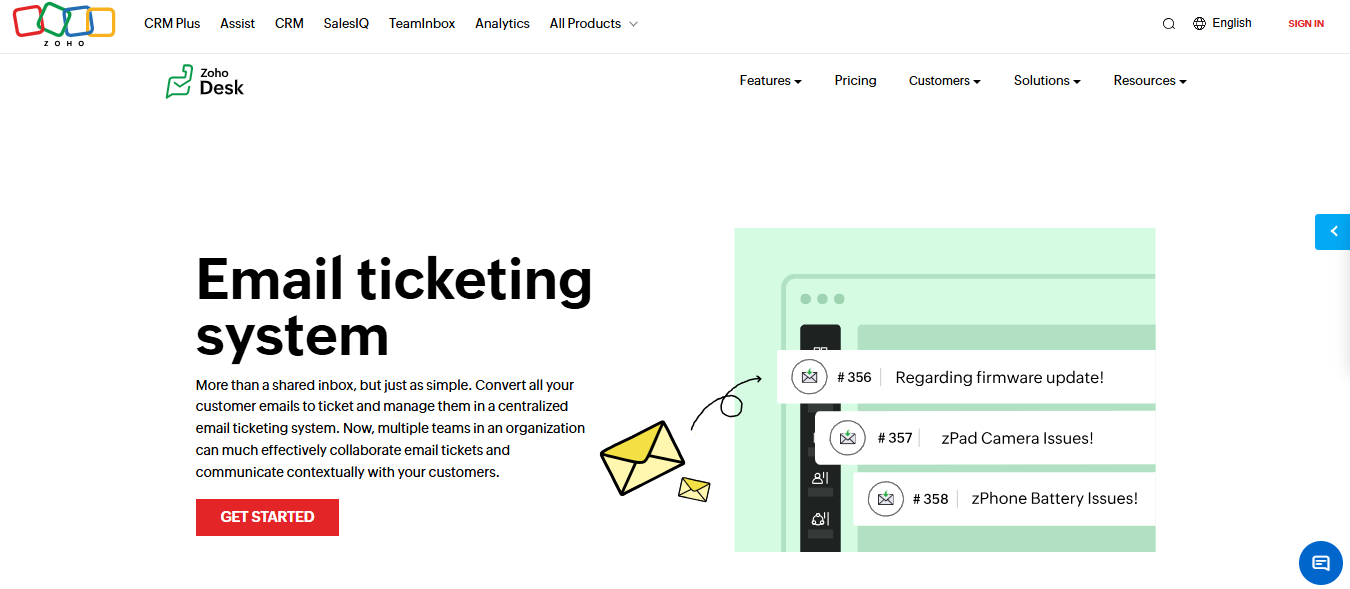
Zoho Mail is email management software with incredibly robust security features. Its data centres claim a reliable 99.9% uptime. Emails sent via Zoho Mail are encrypted at rest and in transit, along with S/MIME message encryption.
Not to forget, the tool is entirely ad-free. Instead of navigating long email threads, use Zoho Mail Streams to turn regular emails into chat-style discussions. This allows teams to @mention colleagues, share emails, and get feedback on drafts.
Advanced Search and Seamless Integration
Do you need to track down an important message but don’t know where it is? Zoho Mail’s eDiscovery portal offers powerful search tools to find specific emails across the organization using extremely customizable filters.
Users also love the platform’s ability to seamlessly connect with other Zoho apps like Zoho CRM and Zoho Projects, making it a smart choice for businesses already using Zoho’s ecosystem. But how does Zoho Mail compare to Gmail or Outlook? Here’s a user review on that:
Key Features
Easily create private email groups for specific purposes. Replace lengthy email threads with chat-like conversations. Share emails by mentioning people or groups with ‘@’ and get feedback on email drafts before sending.
Zoho Mail’s eDiscovery helps you quickly track, retain, search, and find data. Admins can set default retention rules to protect emails. Zoho ToDo lets you easily organize and collaborate on work, as well as label tasks for easy sorting and prioritizing.
Limitations
Zoho Mail is not as easy to use as Gmail, minimal features in the free trial.
Pricing
Starts at $1.25/user/month and goes up to $7.50/user/month.
16. Sortd
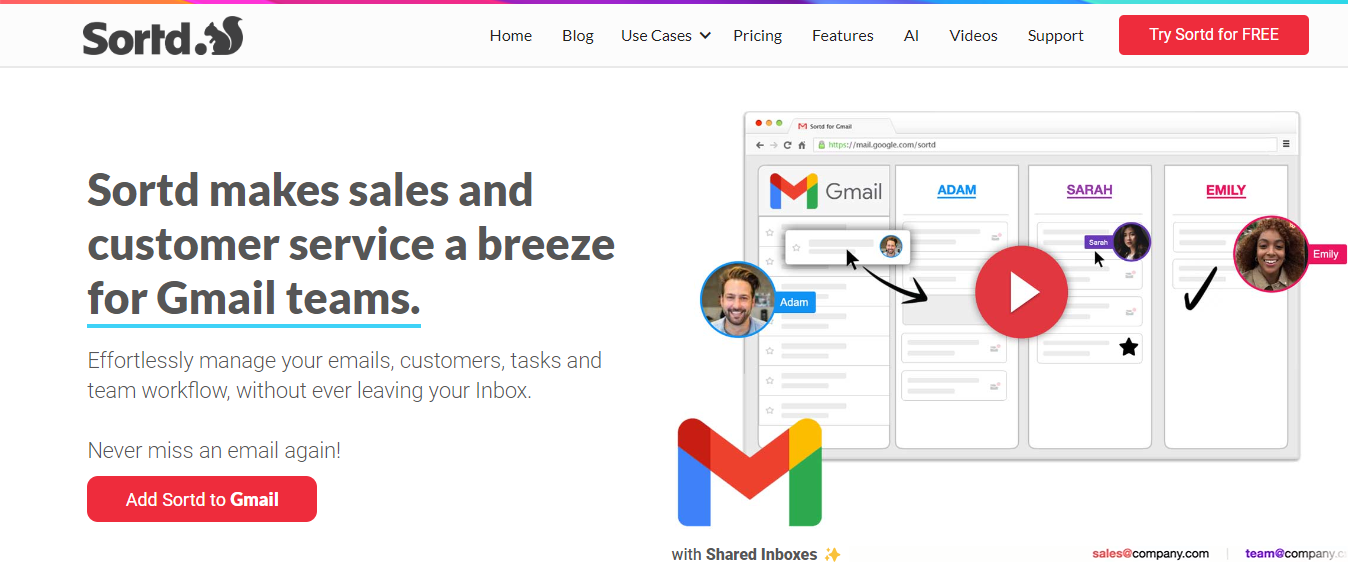
For customer service teams that use Gmail, Sortd is an option worth exploring. It turns the team's Gmail inbox into a visual to-do list where they can see all their emails, tasks, and priorities. Instead of letting essential customer queries get buried, you can sort them into lists and boards. Creating multiple boards and sharing them with other teams is also possible.
Sortd comes with powerful collaboration features. Instead of depending on CCs and forwards, team members can use the internal chat widget which sits right next to every customer email. Driving accountability is also easier as the tool lets users delegate emails in a single click.
Key Features
Organize emails into Trello-like boards. Quickly move emails between boards to prioritize work. Collaborate with team members by sharing boards and delegating tasks. Temporarily hide emails and have them return to the inbox at a chosen time. Works directly within Gmail without the need for additional software.
Limitations
Only available for Gmail users.
Pricing
Offers a free plan with limited features. Paid plans start from $10/user/month and can go upto $15/user/month.
17. Gmelius
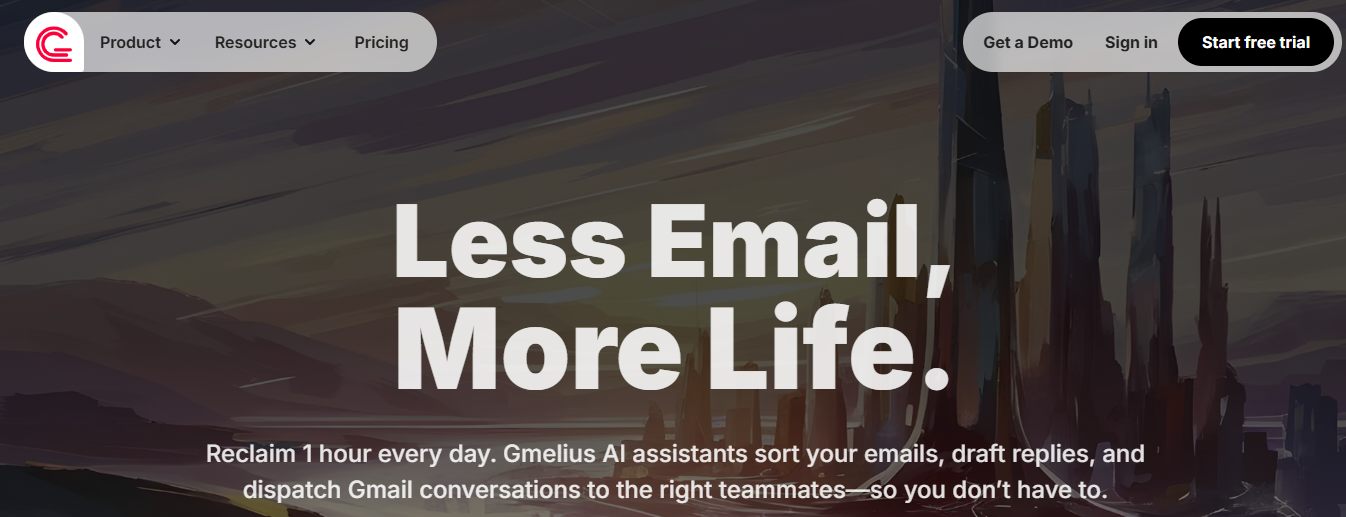
Gmelius is ideal for teams that want to turn their Gmail inbox into a shared workspace for emails, tasks, and workflows. It’s like giving Gmail superpowers of automation, collaboration, and workload distribution. Using Gmelius, you can manage inboxes like info@ and support@ in a highly collaborative way.
Email Management with Workflow Automation
Every email gets an owner and a status so that there’s complete visibility into who is working on what. You can also use Kanban boards to visualize emails as tasks, making tracking progress easier.
The lack of workflows in Gmail can be a problem for many customer-facing teams. Gmelius lets you create automations to route emails to the right team member and tag them for easy prioritization.
Best Suited For
It’s ideal for support, sales, and project management teams that use Gmail for communication. It helps teams to reduce email clutter, automate tasks, and collaborate with their colleagues.
Key Features
- Manage group email accounts like support@ or sales@ collaboratively
- Visualize work using Kanban boards
- Automate routine tasks such as:
- Email assignment
- Email tagging
- Follow ups
- Have internal discussions without sending extra emails
- Write notes to your colleague instead. These notes sit next to the email query, making it easy to access
- Track email opens, clicks, and performance metrics
Limitations
Gmelius is limited to Gmail and Chrome users, which may restrict team usage on other platforms and browsers. Also, Gmelius doesn’t have a mobile app. Teams new to collaborative email tools may need time to adapt. Premium features like automation and analytics are only available on higher-tier plans.
Pricing
Starts at $10/user/month and can go up to $36/user/month.
Related Reading
- How to Use AI to Write Emails
- Email Management Strategies
- How to Organize Email
- What is an Email Client
- Inbox Zero Method
- How to Filter Out Emails in Gmail
- How to Automate Emails
- How to Automatically Move Emails to a Folder in Gmail
- Automate Email Responses
Choosing the Best Email Management Tool

Finding the right email management tool can significantly impact your productivity and workflow. Whether you need help organizing your inbox, managing a team inbox, or automating email marketing, selecting the right tool requires careful consideration. Before diving into different tools, take a step back and assess your needs. Ask yourself:
- Are you seeking a tool to organize your inbox and reduce email clutter?
- Do you need a team inbox to streamline customer support and team collaboration?
- Is your priority email marketing automation to improve engagement and conversions?
- Do you require a tool that offers a mix of all these features?
Understanding your requirements will help narrow your choices and ensure you invest in the right tool.
Key Features to Compare Before Choosing an Email Management Tool
Once you have a clear idea of your needs, research different email management tools. Consider these key features:
- Inbox Organization: Does it offer smart filtering, folders, or AI-driven categorization?
- Automation & Scheduling: Can you set up autoresponders, schedule emails, or automate follow-ups?
- Integration: Does it connect with your CRM, calendar, or other productivity tools?
- Collaboration Features: If you manage a team inbox, does it allow multiple users, internal notes, or ticketing features?
- Security & Privacy: How does it handle encryption, spam filtering, and data protection?
- Pricing: Is it affordable for your needs? Does it offer a free trial or flexible plans?
Read Reviews & Test the Tool Before Making a Decision
Before making a final decision, check user reviews on platforms like G2, Capterra, or Trustpilot. Actual user feedback can give insight into ease of use, customer support, and reliability. Finally, test the tool yourself.
Most email management tools offer free trials or demo versions—take advantage of this to see if it aligns with your workflow and preferences. Following these steps, you can confidently choose the best email management tool that helps you stay organized, improve efficiency, and meet your unique needs.
Antispace: AI-Powered Productivity
Antispace transforms your daily workflow with an AI-powered, gamified productivity operating system. Our platform seamlessly integrates with your essential tools, email, Calendar, and Notes, while our AI assistant handles everything from email management to task organization.
We've built intelligence into every aspect of your workflow:
- Intelligent email responses
- Automated calendar management
- Enhanced note-taking
- Streamlined task coordination
Antispace is your virtual executive assistant, reducing context switching and automating routine tasks. It lets you focus on what matters while our AI handles the rest. Whether you're brainstorming ideas, managing communications, or coordinating projects, Antispace turns productivity from a chore into an engaging experience.
Get started for free with one click today.
Why Use Tools for Email Management?

Email management tools help you organize your inbox quickly. You can efficiently categorize and prioritize emails with features like folders, labels, and filters. This ensures that essential messages are accessible without getting lost in the shuffle.
For instance, if you share an inbox with your entire team, email management software can help you maintain a clutter-free shared inbox, enhancing productivity and allowing you to focus on what matters most.
Enhanced Productivity: Tame the Email Time Suck
Email management software is designed to optimize workflow processes and maximize productivity. With features like email scheduling, snoozing, and automation, you can streamline routine tasks, minimize distractions, and allocate time more effectively.
By automating repetitive actions and prioritizing tasks, you can reclaim valuable time and focus on high-impact activities, ultimately boosting productivity and efficiency.
Improved Communication Efficiency: Strengthen Teamwork and Collaboration
Effective communication is essential for collaboration, teamwork, and project success. Email management software facilitates efficient communication by enabling users to send timely responses, schedule emails for optimal delivery times, and track essential conversations.
Email management software strengthens relationships, enhances collaboration, and drives positive outcomes by fostering clear, concise, and timely communication.
Robust Security and Compliance: Keep Your Data Safe
Security is a top priority in today’s digital environment, and email management software offers robust security features to safeguard sensitive information and mitigate risks.
With encryption protocols, secure authentication methods, and compliance mechanisms, users can protect confidential data, preserve data integrity, and ensure regulatory compliance. Email management software that prioritizes security instills trust and confidence among users and stakeholders.
Seamless Integration: Enhance Your Existing Workflow
Email management software seamlessly integrates with other productivity tools and platforms, enhancing workflow efficiency and collaboration.
Whether syncing emails with calendars, task management apps, or collaboration tools, integration capabilities enable users to streamline processes, share information seamlessly, and foster collaboration across teams and departments. By breaking down silos and promoting interoperability, email management software empowers users to work smarter, not harder.
Personalized User Experience: Tailor Email Management to Your Needs
Email management software offers a personalized user experience, allowing users to customize settings, preferences, and workflows to suit their unique needs and preferences. Users can tailor the software to their requirements by configuring shared inbox layouts, setting up rules and filters, or creating custom email templates.
Email management software enhances user satisfaction and engagement by providing a personalized user experience, driving adoption and long-term success.
Related Reading
- How to Declutter Email
- Email Overload
- Email Summary
- Automated Email Follow Up
- AI Email Cleaner
- Email Productivity Tools
- Best Email Parser
- Email Sorter
- Best Email Organizer App
- Best Email Client for Gmail
7 Best Tips for a Clean Email Inbox

1. Automate as Much as Possible
Email management tools can help with the challenges unique to email by allowing system administrators to automate more capture activities. Enabling a “file on send” feature lets organizations capture email as it is being sent, relieving the capture burden from the end user and helping meet any rigorous compliance requirements.
Many systems also have automated capture upon receipt tools or integrated email archive utilities to capture incoming email and automatically file it based on message metadata.
2. Email Management System to Help with Storage and Expense
Many organizations cannot effectively administer email due to its growing quantity and size. Email integrations can tremendously reduce storage volumes and duplication issues by allowing information workers to email links to documents already managed in a content system.
This reduces the need to send copies, as email attachments typically are, repeatedly around the organization. Sending links to managed content also helps respect security on confidential documents and ensures only current and approved versions of documents are viewed.
3. Manage Email by Role
One approach to automating email management is to manage it by role. This approach uses the email archiving approach to capture everything. Still, it is only used for specific roles or users likelier to complete transactions or decisions using email.
In that sense, it reduces the distinction between records and non‐records; the bulletin notes that capturing non‐records or personal messages is likely. This approach is much easier to understand and for users to comply with, because it’s a small subset of users, and they don’t have to do anything to comply. Instead, email is captured automatically.
4. Categorize Emails
Not all emails must be kept; only official records must be retained. Individual employees can sort these within their inboxes. To manage emails effectively, staff should distinguish between official and transitory records.
Official records document an organization's business transactions, activities, and decisions. They must be securely saved and stored for authorized access in future business, legal, or archival needs. Transitory records have only short-term value and are not required for future reference. These include:
- Personal and social messages
- Room bookings
- Meeting reminders
- Ads
5. Retaining Emails in Electronic Format
Depending on the functionality of the electronic information management software, emails may be automatically transferred into a file or folder, or “dragged and dropped” into an appropriate file or folder.
The organization’s records retention and disposition schedule may automatically set the retention and disposition of records, or the schedule may need to be applied manually.
6. Train Staff
Email management should not fall on the shoulders of records managers. This process requires ongoing staff training and support. As part of their training, staff should be informed of the organization’s corporate email management policy and be able to identify what emails to keep as official records and what emails can be deleted.
They should also know where official email records are to be stored and that emails subject to an access to information request or litigation hold must not be disposed of. Most importantly, staff must know how and where official record emails will be captured and retained.
7. Have Exit Protocols In-Place
When an employee is retiring or otherwise leaving the organization, they should ensure that all official email records are transferred from their email mailboxes to the appropriate records management system before they leave. This step should be included in the organization’s checklist for exiting employees.
Related Reading
- Email Autoresponders
- Superhuman Alternatives
- Gmail Alternatives
- Outlook Alternatives
- Canary Mail vs Spark
- Sanebox Alternatives
- Mailbird vs Thunderbird
- Em Client vs Outlook
- Zoho Mail Alternatives
- Outlook vs Gmail
Let Our AI-based Productivity Operating System Handle Your Boring Work
Antispace transforms your daily workflow with an AI-powered, gamified productivity operating system. Our platform seamlessly integrates with your essential tools, email, Calendar, and Notes, while our AI assistant handles everything from email management to task organization.
We've built intelligence into every aspect of your workflow:
- Intelligent email responses
- Automated calendar management
- Enhanced note-taking
- Streamlined task coordination
Antispace is your virtual executive assistant, reducing context switching and automating routine tasks. It lets you focus on what matters while our AI handles the rest. Whether you're brainstorming ideas, managing communications, or coordinating projects, Antispace turns productivity from a chore into an engaging experience.
Get started for free with one click today.